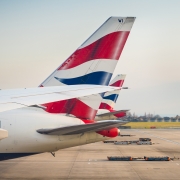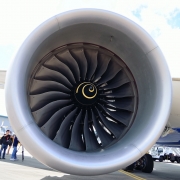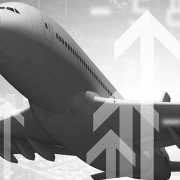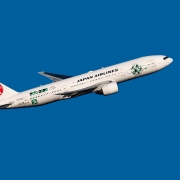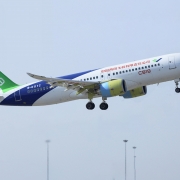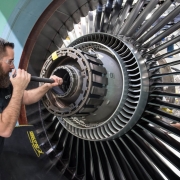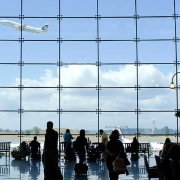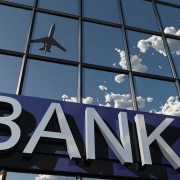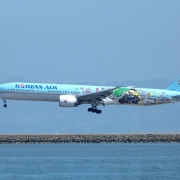The availability of capital to fund aircraft acquisitions is one of the critical support structures that allows for commercial aviation industry growth and prosperity. In an environment of low central bank interest rates and highly liquid markets, investors from around the world have been flocking to the aircraft finance sector. While the enthusiasm for the industry is welcomed and has provided capital for fleet renewal and growth, some lessons can be learned from the historical progression of commercial aircraft finance that lessors, operators, and investors would be wise to heed.
In this edition of mba’s insight series, we will look at the three major pillars of commercial aircraft finance, the relationship of operators and lessors to those pillars, and the past investment cycles seen in the industry. From this solid foundational understanding, we will explore the importance of accurate asset valuation and discern some lessons that can be garnered from the study of past investment patterns. Finally, we’ll apply those lessons to the future of aircraft finance, identify emerging trends, and look for areas where caution may be warranted.
The Three Pillars of Aircraft Finance
When airlines or leasing companies acquire new aircraft, closing the transaction on a cash basis only accounts for about one-quarter of aircraft deliveries. In 2016, cash was used in approximately 28.0% of the $122 billion spent on procuring commercial aircraft.[i] For airlines, in particular, there are drawbacks to acquiring aircraft using cash. The airline winds up assuming the depreciation of the aircraft and the capital outlay is often enough to give both internal accountants and investors significant pause. For leasing companies, the reasons not to use cash in a transaction are much the same; if interest rates are attractive enough, there may be financing avenues that are more economically advantageous. These less cash-intensive alternatives make up the three main pillars of commercial aircraft finance.
Bank Debt
Taking on bank debt was, until the advent of leasing and elaborate collateralization schemes, the primary method by which airlines (and later leasing companies) acquired commercial aircraft. On the surface, bank loans for aircraft look much like a mortgage on a home or commercial building; the bank supplies the upfront cost of acquiring the asset and is paid back by the operator over time with interest added.
While they may seem relatively simple, in reality, bank loans for commercial aircraft can be highly sophisticated financial instruments. There is often an upfront cost to the leasing company or airline; 15.0% of the amount of the transaction is a typical number, but this can vary depending on the value of the underlying asset and the creditworthiness of the entity purchasing the aircraft. Large commercial banks will often pool their resources, spreading the risk among a syndicate of different financial institutions to fund the aircraft acquisition deal. Bank loans can cover the purchase of a single aircraft, or many separate airframe purchases may be packaged together into portfolios worth hundreds of millions of dollars. These loans can be unsecured, or the value of the aircraft themselves may secure them.
Often banks provide loans to airlines or leasing companies on a short-term basis, with the expectation that the purchaser will refinance their purchase. Known as warehouse or bridge loans, these arrangements can involve either fixed or revolving lines of credit that allow the aircraft acquisition to proceed while other financing deals are put into place. Additionally, banks may provide pre-delivery financing to allow commercial aircraft purchasers to make the required payments on new aircraft as they are being built. These payments are often equal to an amount that is between 10.0% and 20.0% of the sale price.
Capital Markets
Banks represent a single source of capital with which to fund purchases. The downside of bank loans is the substantial risk to a financial institution’s balance sheet; they are exposed to the depreciation of the aircraft asset and the risk of operator insolvency in what is a historically highly-cyclical industry. The capital markets offer a significant reduction of risk for lenders, providing financing to the commercial aviation marketplace. By collateralizing the debt, the risk of the transaction is spread out among a large pool of investors. Additionally, leveraging bond markets for aviation financing represents a significant increase in the amount of available capital, creating competition and reducing overall lending costs across the landscape.
Access to investor funds come in three general varieties:
- Unsecured bonds: These bonds are most typically used by leasing companies who require flexibility in terms of payment profile. While underlying physical assets do not back them, these products are nevertheless very popular. In 2017, approximately $4.85 billion in unsecured bonds were issued to commercial aircraft leasing companies.[ii]
- Asset-Backed Securities (“ABS”): These securities are backed by the value of the aircraft themselves, and in the case of leasing companies, the value of the rental contracts. ABS’s are complex financial instruments that are organized into tranches of payment priority and risk. The highest tranches are paid first but at lower return rates than the lower tranches. ABS’s are increasingly becoming a popular method for aircraft lessors to tap the capital markets.
- Enhanced Equipment Trust Certificates (“EETCs”): These instruments function in much the same way as ABSs and are based on the value of the aircraft assets. They are typically issued by a single airline to fund equipment purchases.
Export Credit Agencies (“ECAs”)
ECAs are private or quasi-governmental financial institutions that issue export financing. The reason that ECAs exist is the result of a relatively simple calculation; increasing exports is good for national economies. When a domestic company imports a product to a foreign country, that export comes with political and commercial risks not inherent to domestic transactions. ECAs may provide direct financing, intermediary loans, or interest rate equalization loans to encourage export activity. Direct financing notes for commercial aircraft are standardized financial instruments that are based on a maximum 12-year term. Examples of ECAs include the U.S. Export-Import Bank of the United States (EXIM), the European Investment Bank (EIB), and the Export-Import Bank of China. Since their role is to provide capital for international sales, the availability of ECA funds is of particular concern to aircraft manufacturers.
A Brief History of Aircraft Finance Trends
Up until 2008
The business of investing in commercial aircraft is nearly as old as the airline business itself. Technological development has always outpaced the ability of operators to afford to purchase the latest and greatest technology or to renew their fleets as they reached the end of their useful lives. For most of commercial aviation’s history, bank loans have been the “coin of the realm” of the aircraft finance world; banks would make loans that were normally backed by the aircraft themselves. Airlines would eventually own the aircraft, having assumed the costs of purchase, financing, and depreciation throughout the life cycle of the assets.
Bank loans for aircraft purchases often did not provide operators with the flexibility they required to refleet (or shed airframes) in response to market demands. Additionally, outright aircraft purchases can encumber airline balance sheets with numbers that are unattractive to potential investors. To address the need for operator flexibility and to meet market demand, commercial aircraft manufacturers began leasing aircraft in 1968. This first boom in leasing was led by McDonnell Douglas and Boeing who were looking to move their DC-9s, 727s, and newly developed wide-body products.
The intrinsic value of aircraft assets and the investment opportunity presented by providing capital to airlines operating on razor-thin margins was realized by corporate entities outside of traditional aviation circles. In 1967, GECAS wrote its first commercial aircraft lease to Allegheny Airlines. In the mid-1980s, amid an environment of falling interest rates and a commensurate plummeting of Treasury bill yields, institutional investors began to look for stable instruments that offered superior returns. They found those opportunities in the aircraft leasing market. Non-aviation companies as diverse as Xerox, IBM, and General Motors—even Greyhound—held lease notes on a substantial percentage of the world airline fleet. On the back of this private capital, the total value of large commercial aircraft deliveries increased from less than $20 billion in 1982 to more than $50 billion in 1990.[iii]
With the growth in aircraft leasing by both dedicated aviation financing companies and others, new investment instruments were conceived to handle demand. The early 2000s saw an increase in more complex ABS and EETC-type products and increased competition in the financing space. After the shock of the 9/11 attacks, the commercial aviation industry seemed to be in a phase of solid recovery. There was abundant competition to write loans for new aircraft around the world. An AIN article in December 2007 quoted an anonymous lender who said, “I’ve seen some competition provide 100-percent financing on old aircraft, creating loans that were underwater from day one.”[iv] The market was overheated.
It is essential to pause for a moment to consider the importance of aircraft valuation to understand historical trends in aircraft finance. Most of the instruments (secured bonds, bank loans, ABSs, and EETCs) used to access capital for aircraft purchases are based on the value of the underlying assets themselves. In the case of the airlines, the market value of the aircraft is the operative value. For leasing company purchases, both the value of the aircraft and the rental contracts must be considered. Any historical evaluation of finance trends must include a careful assessment of aircraft valuations over time. The value of any of these transactions to the investment community is directly proportionate to the value of the assets which underlie those arrangements.
The 2006-2007 financial crisis to the present
The aircraft lending market was not the only overheated economic sector. It is now well-known that, in 2006, U.S. real estate values crashed as a result of excessive sub-prime lending. After years of easy money based on mortgage-backed investment instruments and foreign investment, portfolio values were reduced to dust virtually overnight. Liquidity in the market dried up almost entirely. There was virtually no money in the capital markets for lessors and airlines to borrow for aircraft acquisitions.
After the crash, the value of aircraft—and thus the value of aircraft based investments—took a similar hit. While the overall reduction in aircraft market values were not as dramatic as what happened to the stock market, they were negatively impacted to a degree that was palpable to prospective investors. Those institutional investors who had just had their “hair singed” by the worst economic crisis since the Great Depression were in little mood to get burned again. The anemic economic environment led to massive reductions in consumer spending, forcing airlines to slash the number of available seat miles (“ASMs”) in the marketplace and right-size their fleets.
In July of 2008, before the long-term impacts of the financial crisis were fully evident in the aviation industry, U.S. airlines flew more than 93 million ASMs system-wide. As the airlines aggressively cut capacity and parked airframes, ASMs fell to a low of 68.5 million in February 2010. ASMs did not recover to 2008 levels until July of 2011.

One of the major financing avenues that the commercial aircraft industry turned to was ECAs. These quasi-governmental financial institutions stepped in to provide critical funding for aircraft manufacturers to export their products overseas, giving lessors and operators around the globe access to desperately needed capital to right-size their fleet mixes. By 2011, ECAs were the source of a full third of all commercial aircraft finance capital.[v]With the dramatic reduction in liquidity in the market, aircraft buyers, lessors, and manufacturers were forced to turn to financing systems outside of the capital markets to fund purchases of aircraft. Even as ASMs were reduced, newer and more fuel-efficient aircraft were making their way into airline fleets. Aircraft type shifts were particularly apparent in the regional airline sector; as mainline fleets mothballed inefficient older aircraft, regional airlines saw deliveries of larger and newer aircraft (the Embraer E-170 and E-175 were particularly notable).
As time passed since the shock of the financial crisis and world markets stabilized, the aircraft financing landscape underwent changes that rebalanced the capital sourcing mix. To spur consumer spending and bolster their economies, central banks around the globe slashed interest rates following the crisis of 2006-2007. These rates fell to—and remain—near historic lows. Those low rates, coupled with astounding industry growth and record airline profits, made both bank loans and capital markets plentiful sources of aircraft finance capital once again. The same low interest rates brought investors looking for better bond yields back to the market, adding more available capital to the mix. The amount that ECAs contributed to the total financing picture was impacted to the greatest degree. In 2011, 33.0% of aircraft financing was provided by ECA institutions. That percentage fell off precipitously in 2014, and by 2017 ECAs only provided 4.0% of the $122 billion in commercial aircraft capital.[vi]

Discerning patterns in investment from the past
Based on our look at the history of aircraft finance trends, it is possible to come to a few general conclusions.
- Valuation is critically important. The overall value of nearly all of the available financing instruments to both the financial institutions and their investors is predicated on the value of the underlying assets. In most cases, these are the aircraft themselves.
- Aircraft values, and thus the value of any investment instrument predicated on them, tend to track with GDP. This makes practical sense; as GDP falls, so too does consumer spending. Less consumer spending leads to less money entering capital markets. Airline bottom lines suffer directly as well. In poor economic conditions, discretionary travel spending tends to fall off. In the financial crisis of 2006-2007, aircraft values suffered—and remained somewhat flat for a period afterward—as airlines “right-sized” their fleets to the demand.
- Low interest rates tend to stimulate both bank loan and capital market financing (ABS/EETC/secured bonds) activity in the commercial aviation finance space. This applies to both lessors and operators; lessors have become especially active, as the airlines have learned that leasing aircraft allows for increased flexibility and attractive balance sheet benefits.
- ECA is an option, but not preferred in the face of low interest rates and highly-liquid capital markets. The standardized terms of these credits are often inferior to bank loans and the capital markets, making them an unattractive “last resort” option for many operators and lessors.
- The market is cyclical, and recognition of trends tends to lag behind reality. As we saw in the run-up to the financial crisis, when loans were being written for aircraft at a loss, unbridled enthusiasm for an asset class can create so much competition in the marketplace that financial institutions write notes that, on later examination, prove to be less than worthwhile.
Where is aircraft finance headed?
The commercial aviation finance industry is complicated, but by applying the lessons learned about the evolution of the aircraft financing sector and how investment patterns have changed in response to external events, some reasonable predictions can be made regarding the future. When projected industry growth, anticipated aircraft orders, interest rates, and levels of current investment are considered against historical data, clear directional indicators begin to emerge.
We are currently in a period of growth within the capital markets. Even as the airlines and lessors took advantage of greater bank loan availability and deleveraged risk in 2017, the capital markets sector is poised for continued growth in 2018 and beyond. Lessors, who typically require large amounts of capital to fund large purchase orders from commercial aircraft manufacturers, can be expected to continue to utilize the ABS and other bond-related instruments that have proven to be advantageous for them.
The overall growth of the capital markets and higher availability of bank loans is being driven from both a demand and a money-supply perspective. Demand for commercial aircraft continues to be strong and is anticipated to remain so for an extended period to come. In the next 20 years, it is expected that more than 41,000 new airframes will need to be delivered. This number will be driven by not only fleet replacement as airlines look to take advantage of more fuel-efficient designs, but also by traffic growth. The demand is particularly strong in Asia, which will account for more than 16,000 of these deliveries.[vii]
Even as interest rates have begun to climb slightly, they remain near historical lows. That fact has driven more lenders and investors looking for superior returns into the commercial aircraft finance space, increasing the overall supply of available capital in the market. New entrants have been primarily institutional investors in Asia who are looking for relatively stable instruments to grow their portfolios predictably.

Low interest rates and abundant capital will likely lead to a growth in the role that bank loans play in aircraft finance as well. As commercial banks in Eastern Asia and Australia have entered the space, competition has begun to increase among financial institutions to write loans. The competitive environment has suppressed lending costs for lessors and operators, ensuring bank loans will remain an attractive financing option.
Airlines and lessors have recognized the benefits of bank loans and the capital markets. The aircraft finance picture today is one that is relatively balanced with cash, loans, and ABS/EETC instruments accounting for about 90.0% of capital sourcing. Strong, liquid markets, low borrowing costs, and low interest rates have relegated ECAs to a fairly minor role in commercial aircraft finance. The percentage of capital sourced from ECAs can be expected to remain in the single digits into 2018 and beyond.
Some cautionary signs point to potential issues on the horizon. The influx of new lenders and institutional investors creates greater competition in the aircraft finance space. That is a good thing for lessors and operators, as it continues to allow them to access capital on desirable terms. However, as was seen before the 2006-2007 financial crisis, exuberance can disguise warnings that the market is overheated. That is why accurate valuation is essential; it is the value of the assets underlying an investment (whether it be a bank loan, an ABS, or an EETC) that determines its ultimate worth, not transitory movements of the market.
Interest rates creeping in an upward direction add another cautionary data point to the aircraft finance picture. Airlines, in particular, have demonstrated a strong willingness to aggressively control both capacity and debt. As interest rates move higher, history shows that consumer spending tends to fall. Reductions in consumer spending tend to result in fewer revenue passenger miles being flown for discretionary travel. Since a large percentage of the world airline fleet is leased, operators are well-positioned to absorb fluctuations in demand; leasing allows them the flexibility to adjust the number of seats in the market in a reasonably short period. If demand were to be substantially impacted by unexpected events, aircraft market values could be negatively impacted.
[i] Hammond, Rich. Aircraft Finance. Boeing , 2017.
[ii] “Aircraft leasing company bond issues 2017.” Aircraft Investor, www.aircraftinvestor.com/articles/aviation-finance-data/aircraft-leasing-company-bond-issues-2017/
[iii] Richard Aboulafia | Aviation Week & Space Technology. “Opinion: Short-Term Memories Can Lead To Big Miscalculations.” Opinion: Short-Term Memories Can Lead To Big Miscalculations | Master the Supply Chain content from Aviation Week, aviationweek.com/master-supply-chain/opinion-short-term-memories-can-lead-big-miscalculations.
[iv] Padfield, R. Randall. “Aviation Finance.” Aviation International News, 3 Dec. 2007, www.ainonline.com/aviation-news/aviation-international-news/2007-12-03/aviation-finance.
[v] Hammond, Rich. Aircraft Finance. Boeing , 2017.
[vi] Boeing. Current Aircraft Finance Market Outlook. Boeing, 2018.
[vii] Boeing. Current Market Outlook 2017-2036. Boeing. 16 Jun. 2017.
Download Insight PDF




